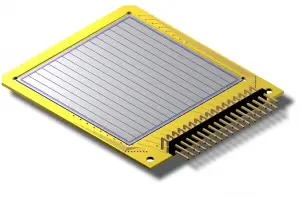
Silicon-based semiconductor detectors are mainly used for charged particle detectors (especially for tracking charged particles) and soft X-ray detectors, while germanium is widely used for gamma-ray spectroscopy. A large, clean, and almost perfect semiconductor is ideal as a counter to radioactivity. However, it isn’t easy to make large crystals with sufficient purity. The semiconductor detectors have low efficiency, but they give a very precise measure of energy. Detectors based on silicon have sufficiently low noise even at room temperature. This is caused by the large band gap of silicon (Egap= 1.12 eV), which allows us to operate the detector at room temperature, but cooling is preferred to reduce noise. The drawback is that silicon detectors are much more expensive than cloud or wire chambers and require sophisticated cooling to reduce leakage currents (noise). They also suffer degradation over time from radiation. However, this can be greatly reduced thanks to the Lazarus effect.
Principle of Operation of Silicon Detectors
The operation of semiconductor detectors is summarized in the following points:
- Ionizing radiation enters the sensitive volume of the detector and interacts with the semiconductor material.
- Particle passing through the detector ionizes the semiconductor atoms, producing the electron-hole pairs. The number of electron-hole pairs is proportional to the energy of the radiation to the semiconductor. As a result, many electrons are transferred from the valence band to the conduction band, and an equal number of holes are created in the valence band.
- Under the influence of an electric field, electrons and holes travel to the electrodes, where they result in a pulse that can be measured in an outer circuit,
- This pulse carries information about the energy of the original incident radiation. The number of such pulses per unit time also gives information about the intensity of the radiation.
The energy required to produce electron-hole pairs is very low compared to the energy required to produce paired ions in a gaseous ionization detector. In semiconductor detectors, the statistical variation of the pulse height is smaller, and the energy resolution is higher. As the electrons travel fast, the time resolution is also very good. Compared with gaseous ionization detectors, the density of a semiconductor detector is very high, and charged particles of high energy can give off their energy in a semiconductor of relatively small dimensions.